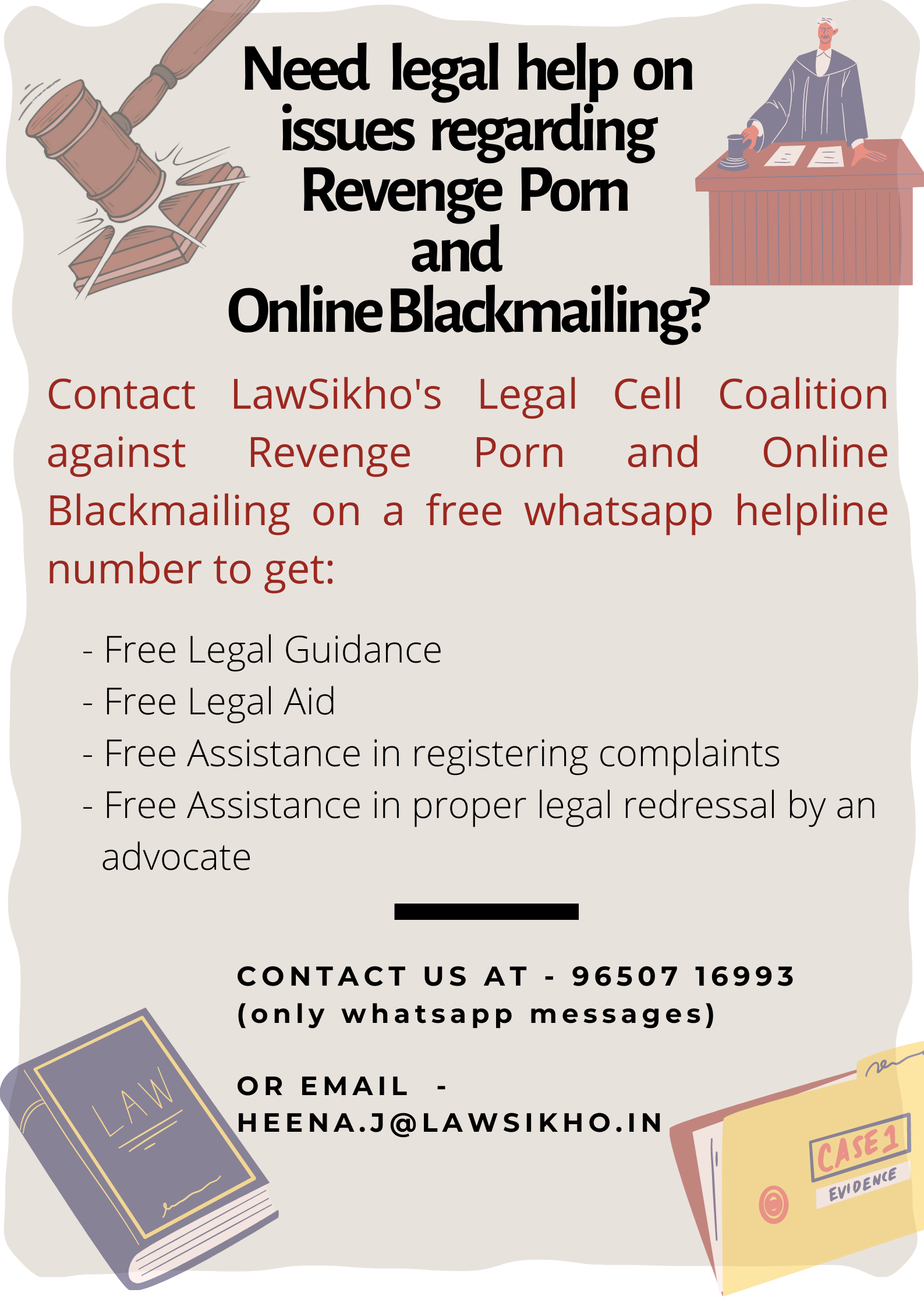This article has been written by Nehal Misra, a student at Nirma University, Ahmedabad. In this article, she discusses the situation wherein a child has sent a nude to someone.
Table of Contents
Introduction
You can certainly guess that it’s a difficult scenario to deal with, whether you’ve discovered that your child is emailing nudes or you just want to be prepared in case it happens. According to a study published in JAMA Pediatrics, one out of every four children in today’s time has admitted to sexting. Sexting has become more popular among today’s generation of teens and tweens as a result of the constant availability of electronics, and extreme peer pressure. Even if they don’t send or receive messages, your children are likely to have a friend who does. They may also receive unsolicited nude images, which is a kind of sexual harassment that can cause a variety of severe psychological impacts, including stress, worry, embarrassment, and even worry for their physical safety because online behaviors can spill over into the real world.
Sexting in India
Sexting is the practice of sending nude or semi-nude pictures/videos via any electronic communication medium. Sexting has become a widespread technique of expressing intimacy and sexual attraction in an age when the internet has tremendously democratized and has naturally infiltrated into every part of human life. According to a McAfee survey from 2014, over 70% of the 1008 Indian individuals who took part admitted to sexting. Sexting, on the other hand, is not limited to adults. It’s also gaining a lot of traction among youngsters. Jama Pediatrics released a meta-analysis in 2018 that looked at 1,10,000 teens from all around the world. According to their research, about 15% of teenagers have sent sexts over the internet. Many Indian news outlets have reported since 2012 that sexting is on the rise among Indian teenagers, even though no actual research has been undertaken.
The infamous ‘Bois locker room’ controversy, in which a group of school-aged males sent and commented on obscene photographs of (minor) girls on Instagram, is the most recent instance. When sexting is done in the name of voyeurism and videos of sexual assault are disseminated, it becomes a more sinister kind of sexting. It is crucial to emphasize, however, that the prevalence of sexting among both adults and teenagers does not imply that they are aware of the legal implications. While most people are still aware of the harrowing consequences of these images falling into the wrong hands, the vast majority are unaware that sending sexually explicit images online, even if they are your own, is a criminal offense.
Why do children get involved in sexting?
Some of the reasons why a child might be into sexting are the increased use of technology combined with typical adolescent risk-taking and sexual experimentation. Young people’s comprehension of the repercussions is sometimes lacking, or they believe they are the exception and will be spared from harm. Girls may sext as a joke, to gain attention, or as a result of peer pressure or coercion. Guys frequently blame ‘peer pressure’. However, for some, it’s almost become second nature, a technique of flirting, appearing cool, or becoming famous. There are many reasons why children involved in sexting. Often messages are exchanged as part of a romantic relationship, as a means of furthering the relationship, or as part of the initial flirting stage. There are other reasons why children sext:
- Sexual expression: Sexting is used by children in relationships to strengthen their bonds and demonstrate their trust in one another. It’s also used as a form of flirtation and to encourage people to start dating. It’s also utilized to entice possible romantic partners’ attention, affirmation, and admiration.
- Social and peer pressure: Wider societal pressures and peer pressure can exacerbate the pressure on young people to sext for propagating the concept of the “sexualization of culture”.
- Accidental/reckless: Sexting content accidentally made by certain children. This happened when the child was unaware that webcams on laptops or mobile devices were in use and changed their positions in front of the cameras.
- Coercion, blackmail, and retaliation: There have been instances where young kids have been forced to create and send sexting content. After receiving one personal image, a party can exploit that image to blackmail the victim into submitting other photographs.
Laws pertaining to sexting
Even if it’s two children willingly exchanging naked images of themselves, it’s unlawful and can be deemed child pornography. Sexting laws differ from state to state, and they can be confusing, so do your homework and find out where your state stands on the matter. Some jurisdictions have “Romeo and Juliet” clauses that reduce the punishment of the crime when the parties are of similar ages. Sexting isn’t a crime in and of itself, but there are some legal aspects to be aware of because “Ignorantia Juris non-excusat” (meaning ignorance of the law isn’t an excuse for a criminal charge) and it’s better to be safe than sorry. There is no specific law against it and neither is there enough precedent. The following provisions of the law govern and monitor the situation if someone sends or publishes online a nude without the consent of that individual.
Information Technology (IT) Act, 2000
- Section 66E– This section establishes the penalties for photographing, transmitting or publishing a person’s private regions without their agreement in a situation when they have a reasonable expectation of privacy and not being photographed, whether in a public or private setting.
- Section 67– ‘This section punishes anybody who transmits, publishes, or causes to be communicated or published any material that is ‘lascivious’ or appeals to the ‘prurient interest.’
- Section 67A– This section is identical to the previous one, with the exception that it makes it illegal to engage in “sexually explicit acts or conduct.”
- Section 67B– While the section is extensive, it penalizes ‘whoever’ transmits, publishes, or causes to be transmitted or published, or collects, downloads, seeks, browses, promotes, advertises, exchanges, or distributes any material that depicts children in an ‘obscene’ or ‘sexually explicit manner’ in the context of sexting. This law also makes it illegal to record your own or another’s sexual abuse of children.
Protection of Children from Sexual Offences (POCSO) Act, 2012
- Section 13– Any individual using a child for sexually gratifying purposes, in circumstances that depict the child’s genital organs, when the child is utilized in real or simulated sexual actions, or where he or she is shown in any obscene or indecent manner, is defined as a child pornographer under this section.
- Section 14– This section states the punishment for the offense in the previous section.
- Section 15– This section criminalizes the possession or storage of child pornography by any person to transmit, propagate, or distributing it.
Sexting and the Right to Privacy
Sexting bans could also be argued to violate Article 12 of the Universal Declaration of Human Rights, which protects the law against arbitrary interference with a person’s privacy. Justice Puttaswamy v. Union of India, a historic decision of the Supreme Court, also acknowledged that consensual sexual actions are protected by Article 21 of the Indian Constitution’s Right to Privacy. While this may be a simple argument when it comes to adult sexting, it is more problematic when it comes to minors. Because children are not regarded as capable of providing consent, as the Supreme Court of India found in the case of the State of Madhya Pradesh v. Balu, it can be argued that the State’s responsibility to preserve children’s morals trumps whatever right to privacy they may have. Children do, however, have the right to privacy and speech under the UN Convention on the Rights of the Child. Given this, it would seem prudent to grant children a limited right to privacy. The courts could assess whether the youngster is mature and competent enough to make such a decision. In any event, punishing them with the same criminal rules that apply to child pornographers is ludicrous. When sexting occurs between an adult and a juvenile, however, the laws must be followed to protect children from pedophiles. When sexting is consensual and happens between a minor and legally adult (18 years old), the Court may consider the specific circumstances and issue an appropriate ruling, just as it does when minors and young adults engage in consenting sexual intercourse.
Steps that can be taken if a nude is shared
It’s natural for teenagers to be interested in sexuality and to begin to investigate what it means to be a sexual creature. With easy access to phones and social media, though, things may quickly spiral out of control and become quite deadly. If your child is caught sexting, make it obvious to him or her what is unsafe and damaging about it. Parents should be aware that if their child has made or shared a nude, they have also committed a criminal violation. Take the necessary steps to address the matter and speak with your teen. When dealing with your teen’s behavior, remember to talk about what is and isn’t acceptable in terms of sexuality, and don’t be reluctant to seek psychological help.
Part 1- Talking to your teen
- Discuss the situation- You may want to punish your child right away, but instead, have a tough conversation with him or her. Sit down with your child and have a calm, friendly conversation about the situation.
- Avoid putting your child in a bad light- Be careful not to shame your child, regardless of your feelings. Their acts do not define them, and passing harsh judgment may have a long-term negative impact on your teen’s self-esteem. Without passing personal judgments, discuss the dangers of sexting and the consequences. Curiosity is a powerful motivator. Instead of hurling accusations, instead of criticizing your kid, ask questions and try to understand them.
- Recognize the psychological effects- Understand that if a photo of your teen is posted, he or she will likely feel humiliated, ashamed, or embarrassed. This encounter may harm your child’s self-esteem and mental health. Recognize that, despite your disapproval and unhappiness with your teen’s action, this is most likely a painful experience for them. Provide your teen with support and reassurance in the face of their difficulties. Instead of passing judgment and criticism, be present to your child.
- Discuss the legal ramifications- Child pornography is defined as any nude photograph taken or transmitted to sexually exploit a child under the age of 18. Any distribution or trafficking of such photographs might be considered child pornography. So, even if your youngster emailed a photograph of themself to a friend, that might be considered child pornography distribution. If your adolescent’s phone has photographs of another teen, you may be accused of having child pornography on your hands. And it might be a crime if an adult has been sending and receiving images from your teen. Consult an attorney straight away if you’re worried about legal ramifications.
- Describe the long-term repercussions- Teenagers are still honing their talents and developing their judgment. Teens sometimes struggle to comprehend the long-term ramifications of rash decisions. While flirting and exploring sexuality can be enjoyable, and pushing limits is natural, technology adds a layer of danger to these activities. Explain to your teen the consequences of their conduct.
Part 2- Taking Action
Any victim’s top priority is to have the photographs or video permanently deleted from the public domain. As a result, requests must be made to the website(s) that host the content. Several regulations and restrictions apply to the websites where your explicit content is most likely to be found. Extortion websites that offer to remove images in exchange for money are clearly in the extortion industry, which is already prohibited. Knowledge of cyber laws can be extremely useful in this situation. The photographs will not be published anywhere else if an injunction is obtained from a court of law. On June 19, 2015, Google issued a policy indicating that they will honor victims of “revenge porn” requests and remove nude or sexually explicit photographs shared without their consent from Google search results. The offender is charged under several provisions of the IT Act and the Indian Penal Code in circumstances when the victim’s nude or obscene images are uploaded without their consent (IPC). In addition, the subject can file a defamation lawsuit under sections 500 and 506 of the IPC, and sections 66e and 67a of the IT Act also provide legal remedies.
Part 3- Dealing with the Aftermath
Explain the importance of having healthy sexuality. Teens shouldn’t be chastised only for participating in sexual curiosity. Create a safe environment for your teen to discuss sex and feel at ease doing so. Speak to a therapist if you’re concerned about how your teen is expressing their sexuality or if you believe sexting has harmed your teen’s well-being. Following humiliation or unpleasant experiences, some teenagers experience depression or anxiety symptoms. Consult a therapist if you’re concerned about your child’s emotional or mental health.
Precautionary steps parents can take to avoid their child from sending nudes
It’s far too easy for children to believe that their private Internet communications will remain private. It has a personal feel to it, and revealing sensitive details is one way we create strong relationships with friends and love partners as part of adolescence’s developmental activity. Teenagers should be aware, however, that any private online exchange of words or photographs can be seen by the entire school, not to mention the rest of the globe. As parents, you should inform your child about the specific dangers and serious short- and long-term implications of sending a nude text message. The children should be educated about the following aspects for better understanding:
- Images have a life of their own: In this digital age, information is far less secure and more fluid than it once was. It can be easily tampered with as well as circulated.
- Sexting could result in a criminal record: It is illegal to distribute child pornography, and someone who’s underage can be charged with distributing child pornography, even if she is disseminating photos of herself.
- Dignity is worth protecting: Remind your child that she cares about how the world sees her. While she might think she controls her own sense of dignity and privacy, sexting takes that control out of her hands.
Thus, parents should educate their children about the consequences of sending their nudes as well as make a comfortable environment for the child to discuss issues pertaining to sexting which might come across in the future. The parents need to talk patiently to the child and understand the reasons which instigated the child to get involved in sexting. The parents should try to make the child understand the issues related to sexting rather than imposing their opinions and wishes onto the kids.
Conclusion
According to the 2018 NCRB Crime Statistics for Adults, 6325 cases were filed in all states/UTs and metropolitan regions under Sections 67, 67A, and 67B of the IT Act. These parts were used in 65 cases involving juveniles. It’s impossible to say how many of these were voluntary actions. However, according to a study done by Point of View, a gender justice NGO, only 28 of the 99 cases reported under Section 67 of the IT Act (in the years 2015-17) were non-consensual. According to the NCRB data, 1543 POCSO charges have been filed against juveniles. While most of them are presumably for consensual sexual intercourse rather than pornography, they do give you an idea of what’s out there in the possible future when sexting among teens becomes just as prolific.
The POCSO Rules, 2020, which extended the definition of child pornography and made the sentencing provisions more stringent, were recently notified by the Indian government. While this is a great step forward in the fight against child pornography, the Act leaves consensual sexting between kids undefined. Furthermore, to get a good understanding of what happens when laws are interpreted beyond their intended purpose, we only look at the portions of the POCSO Act that are being extensively utilized to punish consensual sex between minors. Other countries, on the other hand, have already shown us glimpses of the calamity that is ahead. We must listen to the warning bells, and as sexting becomes more prevalent each day, we must modify our laws to better suit the changing sexual mores of the country.
According to data from a study conducted by the University of Utah’s Psychology Department, 1/3 of the sample group did not consider the legal penalties and ramifications before sending sexual pictures or texts to another individual. Making youngsters aware of the implications of their behavior is one viable answer to this dilemma. To avoid the very serious repercussions of a sexual offense with a criminal record, schools and police liaison officers should work hard to prevent sexting and sending nudes through courses and assemblies, as well as dealing with parents and groups of students who are participating in this conduct.
References
- https://www.internetmatters.org/hub/question/steps-can-i-take-child-sent-nude/
- https://www.bark.us/blog/kid-sending-nudes-help/
- https://www.wikihow.mom/Deal-with-Catching-Your-Teen-Sexting
- https://criminallawstudiesnluj.wordpress.com/2020/07/26/our-laws-for-sexting-round-pegs-in-a-square-hole/
LawSikho has created a telegram group for exchanging legal knowledge, referrals, and various opportunities. You can click on this link and join:
 Serato DJ Crack 2025Serato DJ PRO Crack
Serato DJ Crack 2025Serato DJ PRO Crack












 Allow notifications
Allow notifications



